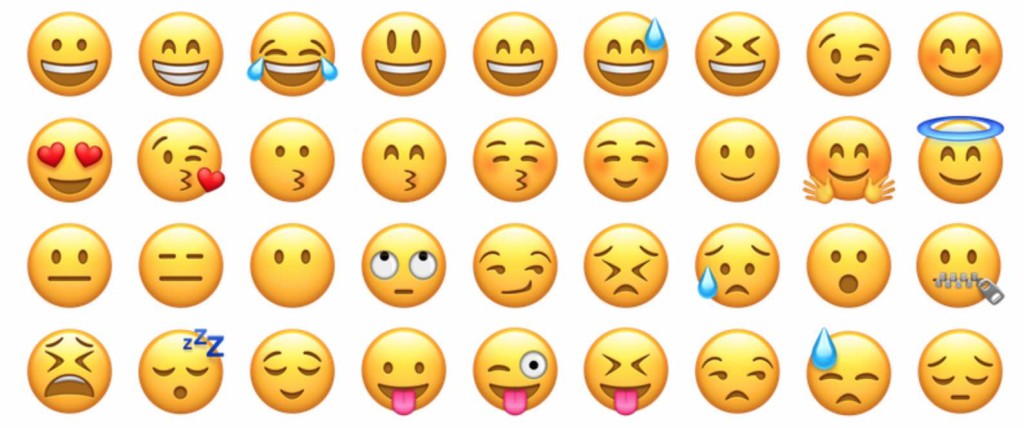
I enjoyed Sarah Wiseman’s guest lecture on repurposing emoji for personalized communication. I found it very relatable. In my last job, my coworkers made a game out of combining Skype’s animated emojis into company in-jokes. Since leaving, I feel a loss at losing those weird emoji, since I rarely use Skype now. I can use the 🤮 emoji, but it won’t look the same – the animated face won’t reluctantly eat up its last drop of vomit before starting the loop again. (This relates to Wiseman’s discussion about the changing appearance and meaning of the 🍑.) And it won’t mean the same thing when it’s not typed furtively, subversively into a work chat window.
The question, whether other people use emoji in personalized ways, seemed a little odd to me to be investigated in such a scientific way. Repurposing emoji seemed to me to be a natural affordance of the medium. Where people like word play, they’ll also play with emojis. But maybe it seems natural to me because I do it and I’m part of a target audience who would do it – millennials who use text as a primary mode of communication.
I think grounded theory is a fitting way to approach this question. Emoji use is personal and subjective, so it can be categorized into themes. At the same time, emoji are succinct symbols, and the problem can be easily distilled into questions – why emoji? Why that emoji? Who are you communicating with?
I’m really interested in private internet behavior like this. I have my own that I’ve never told anyone, and I see bits of others through social media, forum posts, and think piece series (Rabbit Holes at Slate, I Think About This A Lot at The Cut). Has everyone curated their social media feeds to the same extent I have? Has anyone else spent hours reading about cryptids on Wikipedia? As discussed in a previous blog post, who else feels anxious when their fat finger hovers over an Instagram post?
Can we use grounded theory to investigate other kinds of private internet behavior? I think it can be a good approach, but it can run into limitations. Not all research questions are as contained as emoji use. I can formulate questions about a particular behavior, but these will probably be reductive and won’t be easily gathered into a spreadsheet. Peoples’ private behaviors online are sprawling and varied.
I thought it was interesting to discuss grounded theory as a scientific approach, when it’s applying rules to subjective experiences. At every stage, the people involved impose their own subjectivity: the researcher surveys a small, self-selecting group, the subjects describe their own behavior, the researcher assigns themes that they see. The researcher doesn’t read theories about the subject beforehand, but if they’re already immersed in that world, I think it’d be difficult to avoid it completely.
Maybe an objective, universal theory is impossible, so it’s not the goal here? At what point does a process gain or lose scientific validity? Are there other ways to research more complex private internet behavior?
References
Wiseman, Sarah, and Sandy JJ Gould. “Repurposing Emoji for Personalised Communication: Why pizza slice means “I love you”.” In Proceedings of the 2018 CHI Conference on Human Factors in Computing Systems, p. 152. ACM, 2018.